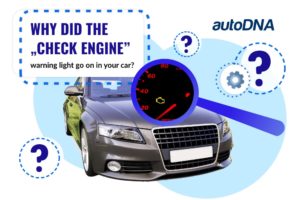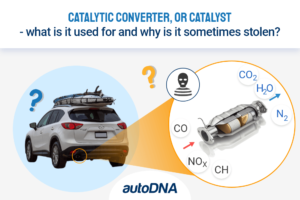
How to Check if a Car is Stolen? Checklist!
Table of Contents
Table of Contents
Purchasing a car is a significant investment, but it can turn into a nightmare if the vehicle has a hidden history of being stolen. To ensure you avoid legal troubles and financial losses, it’s essential to perform due diligence before finalizing your purchase. How to check if a car is stolen?This guide explains the risks of buying a stolen car, provides a checklist for verifying a vehicle’s history, and discusses recent car theft statistics in the U.S. and Europe.
The Consequences of Buying a Stolen Car
Purchasing a stolen vehicle can lead to significant challenges, some of which may have long-lasting impacts on your finances, legal standing, and peace of mind. Below, we detail the most critical consequences to help you understand why thorough checks are essential before making a purchase.
Loss of the Vehicle
When authorities discover that a car is stolen, they are required to confiscate it immediately. Regardless of whether you purchased it in good faith, the vehicle will be returned to its rightful owner or held as evidence in an investigation.
Unfortunately, this means you not only lose the car, but also the money you paid for it. Even if the seller is found, recovering your funds can be extremely difficult, especially if the sale was through an informal or untraceable transaction.
Legal Trouble
Even if you were unaware that the car was stolen, you may still face legal scrutiny. Authorities could investigate your role in the purchase to determine whether you were complicit in the crime. This process can be stressful, time-consuming, and damaging to your reputation.
In some jurisdictions, buyers of stolen goods may face penalties, especially if they neglected to perform basic checks on the vehicle’s legitimacy.
Financial Loss
One of the most immediate and painful consequences of buying a stolen car is the financial loss involved. Recovering your money from the seller is often impossible, particularly if they provided false contact information or disappeared after the sale.
Unlike purchases from established dealers, transactions with private sellers usually lack the legal protections or warranties needed to seek compensation.
Insurance Issues
Insurance providers do not typically cover stolen vehicles. If your car is confiscated, you will not receive compensation, leaving you with a total loss. Moreover, attempting to insure a car with questionable ownership can flag your account with the insurance company, leading to complications in obtaining coverage for future vehicles.
Emotional Stress
Discovering that your car has a hidden criminal history can lead to significant emotional distress and distrust. The process of dealing with legal issues, financial loss, and police investigations can be overwhelming. Furthermore, the experience may make you hesitant to trust sellers in future transactions, adding unnecessary anxiety to an already stressful process.
Social and Professional Consequences
While less common, owning a stolen car can also have social and professional ramifications. If your vehicle is confiscated or linked to criminal activity, others may question your judgment or integrity, especially if your role in the purchase comes under scrutiny.
Understanding these risks highlights the importance of verifying a car’s history before purchasing it. Tools like autoDNA’s Vehicle History Report offer a straightforward way to check whether a car has been reported stolen, ensuring your purchase is both safe and legitimate. Investing time in a thorough background check can save you from financial losses, legal trouble, and emotional stress.
Checklist: How to Check if a Car is Stolen
Before buying a car, follow these steps to verify its legitimacy:
1. Check the Vehicle Identification Number (VIN)
Locate the VIN on the car. Common locations include:
- The dashboard, visible through the windshield.
- The driver’s side door frame.
- The engine bay or other manufacturer-specified locations.
Compare the VIN on the car with the VIN listed in its documents, such as the registration and title, to ensure they match.
2. Use the vehicle’s VIN to Check the Vehicle’s History
Utilize services like autoDNA to conduct a thorough vehicle history search.
autoDNA provides access to:
- Accident records.
- Mileage history.
- Previous ownership details.
- Stolen vehicle checks, using data from 11 stolen vehicle databases across Europe and North America.
3. Obtain a Vehicle History Report
Services like autoDNA offer comprehensive reports detailing:
- Prior accidents and damages
- Odometer readings to identify possible mileage tampering
- The number of previous owners
- Alerts for theft reports or other significant issues
4. Verify Ownership Documents
- Carefully inspect the car’s registration, title, and any other ownership documents.
- Ensure the documents are authentic and free from signs of tampering, such as mismatched fonts, erased marks, or discrepancies in details.
5. Consult Law Enforcement or Stolen Vehicle Databases
- Cross-check the VIN with local law enforcement agencies or online registries for stolen vehicles.
- Use databases accessible via tools like autoDNA for further verification.
6. Inspect for Signs of Tampering
Closely examine the car for:
- Altered or replaced VIN plates
- Inconsistent repairs or paintwork
- Mismatched parts or components that could indicate past accidents or stolen parts
7. Research the Seller
- Verify the seller’s identity and reputation, whether they are a private individual or a dealership
- Be cautious of deals that appear too good to be true, as they may indicate potential fraud or hidden defects
Download the Checklist!
Car Theft Statistics: U.S. and Europe
Understanding car theft trends provides crucial context for why verifying a vehicle’s history is non-negotiable when buying a used car. Below is an in-depth look at car theft data from the United States and Europe, illustrating the scope of the problem and the types of vehicles frequently targeted.
United States: Car Theft on the Rise
The United States has seen a noticeable uptick in vehicle thefts over recent years. According to the National Insurance Crime Bureau (NICB), car thefts increased by 7% in 2023, with over 800,000 vehicles reported stolen.
The most frequently stolen vehicles include Honda, Toyota, and Ford models. These cars are often targeted due to their widespread availability and high demand for parts on the black market. Honda Civic and Toyota Camry are perennial favorites for thieves because of their reliability and resale value.
Certain states, such as California, Texas, and Florida, account for a disproportionate share of vehicle thefts. Large urban centers, where cars are more densely packed, frequently see the highest rates. Organized crime rings in the U.S. are becoming more sophisticated, using technology like signal jammers to bypass keyless entry systems. Additionally, the rise of online marketplaces has made it easier for thieves to offload stolen vehicles quickly.
Europe: A Growing Cross-Border Problem
Car theft in Europe is a significant issue, particularly in countries such as Germany, France, Poland, and Italy. The theft statistics in Europe highlight not only local crime but also the involvement of organized international syndicates.
High-end luxury brands like BMW, Mercedes-Benz, and Audi are often stolen due to their high resale value and desirability. SUVs and electric vehicles have also become popular targets as demand for these models grows.
Europe faces unique challenges due to its open borders. Once stolen, vehicles are frequently transported across countries, making them harder to track. For instance, a car stolen in Germany might be quickly moved to Poland or Eastern Europe for resale.
How to Check if a Car is Stolen? – Summary
Avoiding the purchase of a stolen car is crucial for your financial security and peace of mind. By using reliable tools like autoDNA’s Vehicle History Report, you can uncover hidden details about a vehicle’s past and ensure it hasn’t been reported stolen. Always cross-check the VIN, verify ownership documents, and consult trusted sources before making your purchase.
Verifying if a car is reported as stolen is essential when purchasing a used vehicle. Tools like VIN check services can help identify issues such as a salvage vehicle, prior theft reports, or fraudulent activities involving the car. Key information such as the license plate number or Vehicle Identification Number (VIN) can reveal the car’s status.
autoDNA offers a free lookup service to check basic details about the car’s VIN. For a more comprehensive review, including data from participating insurers and details like potential insurance theft claims, you can purchase a full vehicle history report. Using a free service to verify a VIN initially is a quick and effective way to provide basic information about the vehicle.
By following these steps, you can significantly reduce the risk of purchasing a stolen car and avoid complications such as an insurance theft claim, which could leave you without the vehicle or compensation. Performing additional due diligence when verifying the history and ownership of motor vehicles not only ensures peace of mind but also protects your investment in the long term. Always prioritize thorough research and use trusted tools like autoDNA to make informed decisions.
At autoDNA.com, the market-leading VIN decoding tool, you can free VIN lookup on a given vehicle. All you need for this is the VIN number. In the reports, on used cars, you can find information that will allow you to check whether the seller is telling the truth or not. In the report, you can find data on various topics. One of them is the vehicle history or stolen vehicle bases. You can do a VIN check for free 24/7 throughout the year.
How to check if a car is stolen by VIN?
Enter the VIN into autoDNA’s website. It will cross-check the number with 11 stolen vehicle databases across Europe and North America, providing a quick and secure way to verify a car’s history.












